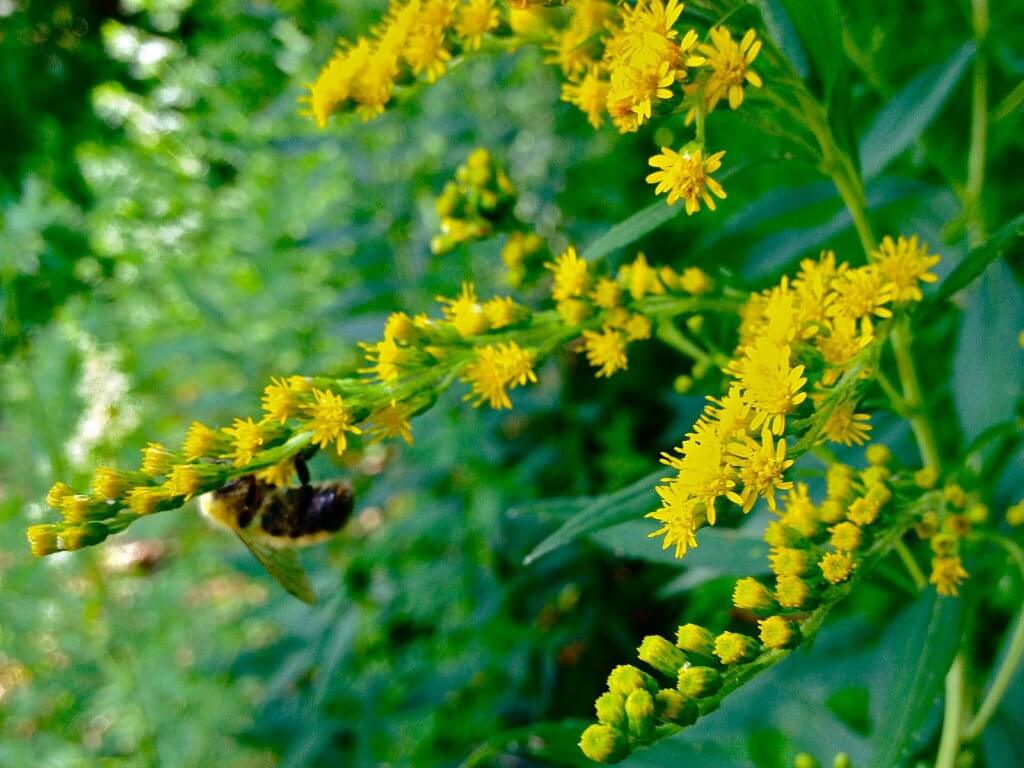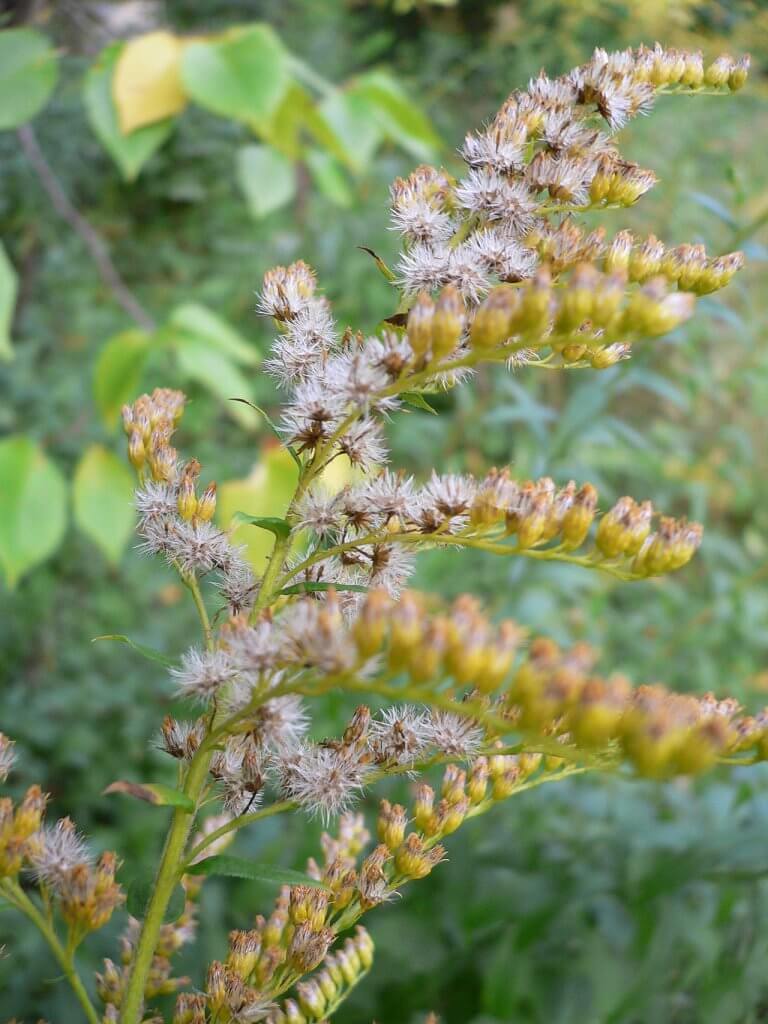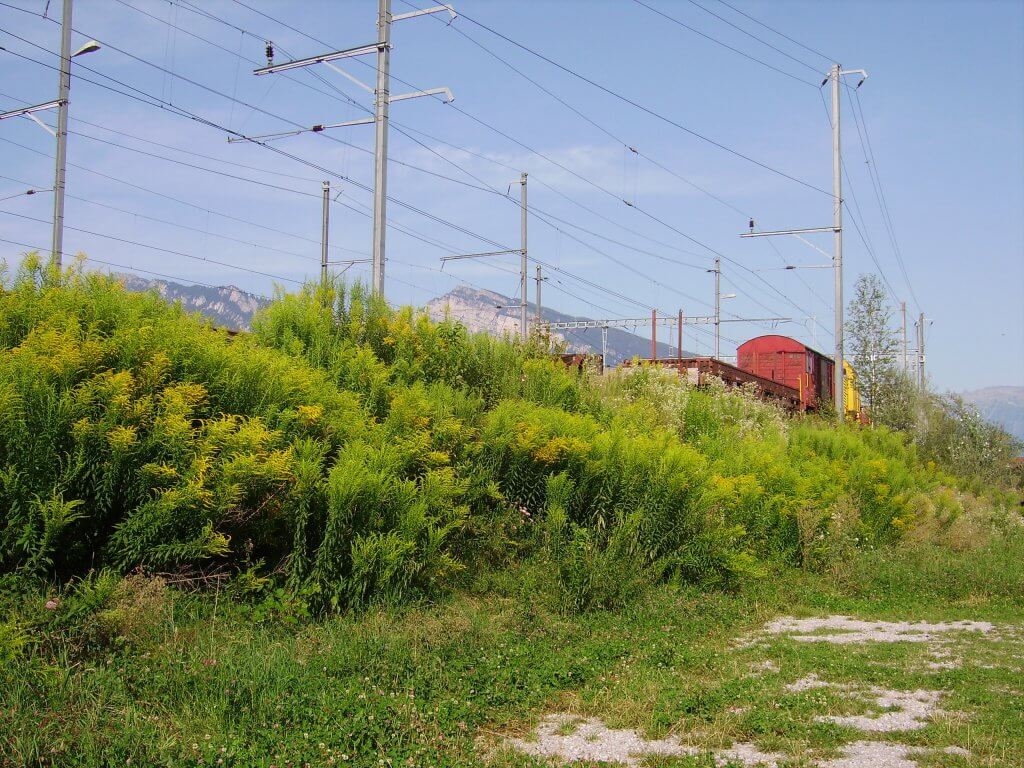Goldenrod (Solidago) is a genus of plants from the daisy family (Asteraceae). Over 100 species can be found in the goldenrod genus. You will typically find them growing in the US, with some species residing in Mexico, South and Central America and also Europe. You will usually see them growing on open grasslands, embankments, meadows and prairies. Due to their perceived medical value, goldenrods are now distributed throughout the world. Within North America they are often viewed as weeds, however within Europe they are often popular garden plants.
When flowering you will typically see radial daisy like flowers collected together in loose clusters. Flower colors are usually yellow, or with white petals surrounding a yellow center. Their heights usually range from a mere 10cm to 1 meter. They tend to have woody rhizomes and stems that branch straight into the air or spread across the ground.

Cultivation and History of Goldenrod
Goldenrods are relatively hardy perennials and can quickly overtake a space or garden if not maintained. Pollination occurs via insects, as the pollen carries too much weight to be blown in the wind.
Plant goldenrod in an area where it will receive full to partial sun and in well drained soil. Due to its quickly spreading nature and classification by some as a ‘weed’, seedlings can be hard to buy. Instead grow goldenrod using seeds, either bought from a garden center or collected from the wild. Sprinkle the seeds across a moist area of soil in which you would like your goldenrod to grow. Water only to keep the soil moist, not wet, until the seedlings begin to appear. The plants will need little maintenance as they mature. During the winter, deadhead the stalks and compost them, to allow space for growth the following year.

Toxicity
You can safely consume goldenrod leaves and seeds, within small amounts suitable for foods or herbal tea. The pollen of goldenrod can often cause strong allergic reactions so care should be taken if handling or consuming for the first time. The limited research conducted on golden rod means its effects on vulnerable individuals or not known. If you are pregnant, breast feeding, or suffer from any form of debilitating disease it may be best to avoid taking goldenrod.
Uses
Culinary uses of Goldenrod
You can eat the leaves of goldenrod, and they were in fact once consumed by Native Americans. The seeds were used within certain foods and the leaves were commonly made into herbal teas. Add the leaves into a salad, soup or casserole as an alternative to spinach. Alternatively add the flowers into a salad for an edible and decorative pinch of color. Using a little honey, infuse the flowers and leaves with boiling water to create your own fragrant tea. Goldenrod honey, in its pure form, has a mild and spicy flavor. It is actually coveted by many honey connoisseurs.
Products created with Goldenrod
You may be surprised to learn that goldenrod leaves contain a source of rubber. None other than Thomas Edison once experimented with the plant in an attempt to increase its rubber yield. It has a history of being used to create the rubber tyres of a Ford model of car, the Model T, once gifted to Edison.
Medicinal uses of Goldenrod
Many herbal remedies have used goldenrod as a medicine to soothe inflammations and cure infections. It also has a history of being used to treat kidney stones and gout. Native Americans once chewed the leaves to soothe toothaches and sore throats. While its effectiveness seems promising, there is currently little evidence to support all of the health benefits.
Did you know…
You may notice some individuals using goldenrod as a sign of fortune and good luck. Different species also happen to be the state flower of Nebraska, South Carolina, Delaware and Kentucky!

Conclusion
A wildflower to some, a weed to others. Goldenrod may not be to everyones liking, but the bright flowers and medicinal properties may prove more valuable to some. Throughout late summer, into fall, you will have an attractive display of bright and cheerful blooms. Create herbal teas and experiment with goldenrod leaves in your dishes.
—————Written by Hannah Sweet
Hannah is a freelance writer and graphic designer from the UK. With a penchant for travelling, photography and all things botanical, she enjoys writing about a wealth of topics and issues, from conservation and slow living, to design and travel. Learn more about her writing and design services at www.sweetmeanders.co
Many of our readers find that subscribing to Eat The Planet is the best way to make sure they don't miss any of our valuable information about wild edibles.
See our privacy policy for more information about ads on this site






